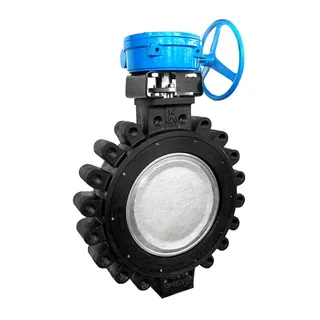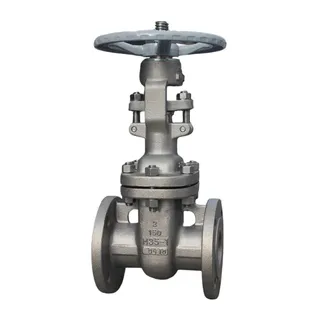Gate valves are indispensable components in industrial pipeline systems, widely used in petroleum, chemical, water conservancy, power, and other fields. Their main function is to control the flow of fluids by opening or closing the valve to cut off or allow flow inside the pipeline. However, during actual operation, gate valves may encounter various failures that affect their normal operation. This article introduces in detail the causes and solutions of common gate valve failures to help you better maintain and manage gate valves, ensuring their reliable performance.
The connection bolts of a gate valve are key components that ensure a tight connection between the valve and the pipeline and prevent leakage. If the bolts are not tightened properly, the sealing gasket and the flange groove surface cannot fit closely, which will lead to leakage. Therefore, it is very important to check the tightness of the bolts regularly.
Inspection sequence: Each bolt and nut should be checked in sequence to ensure none are missed. It is generally recommended to tighten them gradually from the middle to both sides to make the gasket evenly stressed and achieve a better sealing effect.
Tightening torque: When tightening bolts, the force should be appropriate. Over-tightening may damage the gasket, while under-tightening may not ensure proper sealing. A torque wrench should be used to tighten the bolts according to the specified torque value to ensure the correct level of tightness.
Dimensional and precision inspection: The size and precision of the sealing gasket and flange groove surface directly affect the sealing performance. If the dimensions do not match or the surface is too rough, the seal will not be tight. Professional measuring tools such as calipers or roughness testers should be used to measure and ensure that they meet design requirements.
Surface defect treatment: Check whether there are any pitting, sand holes, blowholes, or impurities on the contact surface between the sealing gasket and the flange groove. These defects may destroy the sealing performance and cause leakage. If such issues are found, they should be repaired promptly by welding, patching, or cleaning. Minor surface defects can be treated by manual polishing or chemical cleaning, while serious defects require replacement of the gasket or flange.
Bonnet leakage is one of the most common failures in gate valves, usually caused by leakage of the packing seal. The packing seal is an important sealing method between the bonnet and the stem, and its performance directly affects the bonnet's sealing ability.
Seal selection: First, check whether the selected seal is correct and matches the sealing groove. If the material, size, or shape of the seal is not suitable, it will result in poor sealing. The seal material should be selected according to the working medium, temperature, and pressure, using materials such as graphite or PTFE, and the size should fit the groove perfectly.
Seal appearance inspection: Check whether the seal has burrs, cracks, or distortions. These defects will affect sealing performance and cause leakage. Damaged seals should be replaced immediately.
Surface condition: Check whether the sealing groove surface is rough or has defects such as scratches or pits. These issues will damage the contact between the seal and the groove, leading to leakage. If any defect is found, it should be repaired or re-machined by mechanical or manual grinding to meet precision requirements.
Packing installation inspection: If the valve bonnet or bracket uses compressed packing for sealing, check the installation carefully. Reversed installation of upper and lower packing can cause poor sealing. The packing should be removed and reinstalled correctly, paying attention to the matching of sealing faces. The packing should be moderately tight, neither too tight to cause stem sticking nor too loose to cause leakage.
The valve body is the main part of a gate valve, and its casting quality directly affects the overall performance of the valve. During casting, defects such as sand holes and blowholes may occur. These defects are often difficult to detect during machining, but when pressure is applied, hidden casting flaws may be exposed, causing leakage.
Appearance inspection: After machining, the valve body should be inspected carefully for obvious casting defects such as sand holes or porosity. Tools such as magnifiers or flaw detectors can be used to ensure no defects are missed.
Internal inspection: For internal defects that are hard to see, non-destructive testing methods such as ultrasonic or radiographic inspection should be used to accurately detect internal defect size and position.
Repair welding and patching: If small casting defects are found, repair welding or patching can be performed using proper welding materials and processes to ensure quality. After repair, the valve body should be re-machined and inspected to confirm it meets design requirements.
Valve body replacement: If the defect is severe and cannot be repaired, or the repaired valve body cannot meet performance or safety standards, the body should be replaced with a new one. The replacement should match the original specifications and be installed according to proper procedures.
Seat and disc leakage is one of the most common phenomena during gate valve installation or maintenance. It can be divided into two types: sealing surface leakage and sealing ring root leakage. Sealing surface leakage usually results from poor surface accuracy or defects, while root leakage often occurs due to improper installation or damage of the sealing ring.
Surface accuracy check: Check the precision of the sealing surfaces of the seat and disc. These surfaces should be ground smooth and flat. If rough, remove and regrind them using proper tools and abrasives until the required accuracy is achieved.
Defect treatment: Inspect for pitting, dents, sand holes, or cracks. Minor defects can be repaired by polishing or chemical cleaning, while severe ones require replacement of the seat or disc.
Elasticity check: For spring-loaded seats, check whether the spring elasticity meets requirements. Weak springs cannot maintain proper sealing and should be replaced.
Installation inspection: Check if the T-shaped connection between the disc and stem is too loose. A loose connection can cause misalignment during tightening, affecting the seal. Remove and adjust the joint to ensure a snug fit.
During installation, foreign materials such as welding slag, iron filings, or debris may enter the valve body. These can hinder proper valve operation, preventing full closure and causing leakage.
Cleaning method: Before installation, clean the inside of the valve body thoroughly using brushes, vacuum tools, or high-pressure water. For difficult areas, chemical cleaning may be used to ensure complete cleanliness.
Inspection after cleaning: After cleaning, check for any remaining debris using a flashlight or endoscope to ensure the inside is completely clean.
Use special tools: When installing the valve seat, use specialized tools to ensure proper seating and thread tightness, avoiding leaks caused by poor installation.
Post-installation check: After installation, inspect the valve seat again to confirm a tight fit and good sealing. Conduct pressure or leakage tests to verify performance and reinstall if leakage is detected.
Besides the above issues, gate valves may also experience other problems such as hard handwheel rotation, bent or twisted stems, sealing surface leakage, gate detachment, packing leakage, stem jamming, and flow passage blockage. These issues can affect valve performance and must be resolved promptly.
Possible causes: Rough stem surface, damaged threads due to excessive force, lack or failure of lubrication, tilted stem nut, or incorrect tolerances.
Solutions: Inspect and polish the stem if necessary. Repair or replace damaged threads. Apply suitable lubricant between the stem and nut. Adjust the stem nut for proper alignment and check tolerances, replacing parts if required.
Possible causes: Aged, worn, or corroded seals, or dirty/damaged sealing surfaces.
Solutions: Replace aged seals with suitable materials and clean sealing surfaces thoroughly. Repair or regrind sealing surfaces to achieve smoothness and accuracy.
Possible causes: Loose bolts or poor fit between the gate and seat.
Solutions: Check and tighten bolts or replace them if necessary. Adjust the fit between the gate and seat to ensure proper operation.
Possible causes: Aged, worn, or improperly installed packing.
Solutions: Replace old packing with suitable materials, reinstall properly, and ensure moderate tightness—neither too tight nor too loose.
Possible causes: Corrosion on the stem surface, packing obstruction, or poor lubrication.
Solutions: Remove rust using rust remover or manual polishing. Replace packing and apply proper lubrication between the stem and nut.
Possible causes: Impurities, particles, or crystallization within the fluid causing blockage.
Solutions: Clean the inside using high-pressure flushing or chemical methods to remove blockages. Filter and clean the fluid regularly to prevent impurities from entering the valve. For crystallizing fluids, use heating or stirring to prevent solid buildup inside the valve.
As an important component of industrial pipeline systems, the normal operation of gate valves is crucial for system stability and safety. During use, gate valves may experience various failures that not only affect sealing performance but can also cause fluid leakage, environmental pollution, economic loss, or even safety accidents. Therefore, regular inspection and maintenance are essential to ensure reliable operation. For any detected issues, proper measures such as tightening bolts, replacing seals, repairing or replacing parts, cleaning the valve interior, adjusting installation positions, or adding lubricants should be taken promptly to keep the gate valve in good working condition.



